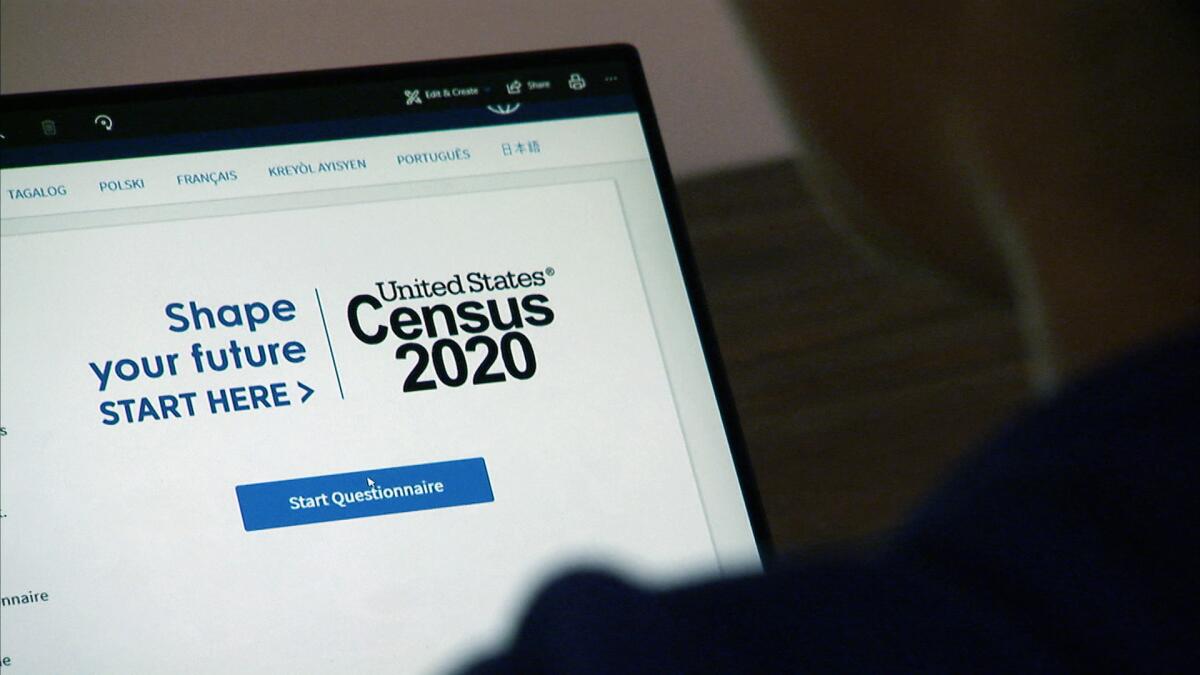State population totals stir questions about a possible Latino census undercount

- Share via
The first round of 2020 census results released this week were the sorts of aggregate numbers that tell us only about broad shifts. As in, California loses a seat in the House of Representatives, Montana gains one.
But a curious pattern seems to be emerging: The census’ own estimates of some state populations in recent years were higher than the announced decennial count itself, leading to some persuasive speculation that Republican efforts to reduce participation in the count, particularly among immigrant communities, worked.
And the Republican-leaning border states of Arizona and Texas, as well as GOP-dominated Florida, may have lost out on gaining extra House seats. Earlier estimates predicted those states would pick up five or six seats; they gained three. But such an undercount also could mean a Republican advantage in in-state redistricting by diluting representation for Democratic-leaning Latinos.
Kevin McCarthy suggests that a commission should look at unrelated issues.
Beyond that, an undercount also could skew the distribution of some $1.5 trillion (by one estimate) in annual government spending, sending less to the undercounted communities.
All of this is speculative. The Census Bureau expects to release a tranche of statistics in September that will include such telling details as age, race and ethnicity, along with populations down to the census tract level. It will be then, advocates say, that they will be able determine the scope of undercounts.
But the big numbers look a bit like a red flag. The Census Bureau’s 2019 population estimate for Arizona was 7,278,717; the decennial total was 7,158,923, a drop of nearly 120,000. For Texas, the difference was more than 187,000, and for Florida, nearly 93,000.
None of those states had very robust state or local efforts to encourage participation in the census, like the $187-million effort California undertook. Here the 2020 census count came in 64,500 below the 2019 estimate, which is regrettable (and worth fighting over in court) but not that significant in a state with 39.6 million people.
“The initial results are surprising enough that once more details are released, we will be able to better determine to what extent the Latino population was fairly and accurately counted,” said Arturo Vargas of the National Assn. of Latino Elected and Appointed Officials Educational Fund. “There appears to be a correlation between the investment of statewide governmental resources in census outreach and apportionment tallies.”
Does President Biden plan to ban Americans from eating tasty burgers? Only in the demented dreams of conservative commentators.
Demographers and civil rights groups feared this would be the result of a double whammy that hit the census: aggressive efforts by the Trump administration to dissuade immigrant communities from taking part, including the failed effort to include a question on the census about citizenship status, and the unavoidable difficulties of conducting a national nose count during a deadly pandemic.
How this will all play out is unclear, but one thing is certain: It will involve lawyers.
More to Read
A cure for the common opinion
Get thought-provoking perspectives with our weekly newsletter.
You may occasionally receive promotional content from the Los Angeles Times.











